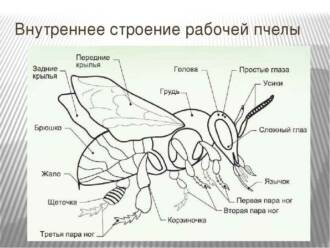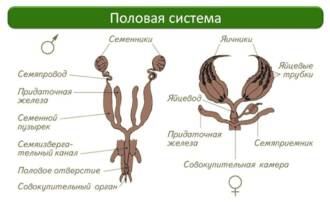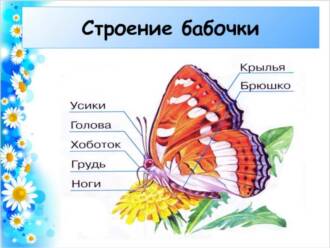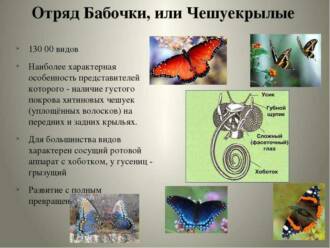
Butterflies are amazing creatures that attract attention with their bright and beautiful wings. However, wings are not the only interesting part of the anatomy of these insects. Butterflies also have a unique body and head structure, which play an important role in their life and functioning.
Wings are the most visible and distinctive part of butterflies. They come in a variety of shapes, sizes, and colors that help them attract the attention of mates, deter predators, and blend in with their surroundings. The wings are composed of a thin membrane covered with scales, which give them a bright color and a unique pattern. In addition, butterfly wings are used for flight and maneuvering in the air.
The butterfly's body consists of several main parts: the thorax, abdomen, and legs. The thorax is a strong and mobile part of the body that serves to attach muscles and wings. The abdomen is a long and flexible part of the body that contains the digestive and reproductive organs. The legs of butterflies serve to move along the surface, capture food, and defend themselves.
The head of butterflies is a very important part of their anatomy. It contains sensory organs such as eyes and antennae, which help butterflies navigate in space, find food and mates. Butterfly eyes are made up of many small facets that allow them to see at a wide angle and distinguish colors. Antennae are sensory organs that serve to detect smells and tastes, as well as to communicate with other butterflies.
Basic parts of butterfly anatomy
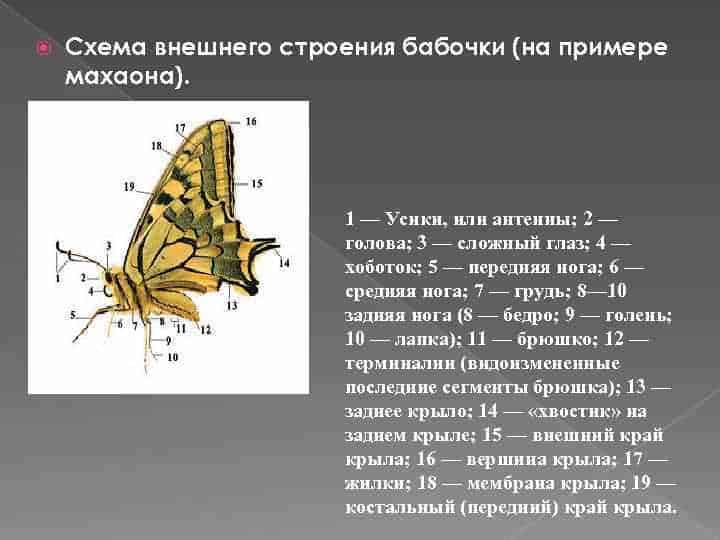
Butterflies are amazing creatures with complex anatomy that allows them to fly and attract attention with their bright wings. The main parts of butterfly anatomy include wings, body, and head.
Wings
Butterfly wings are one of their most notable features. They usually have beautiful and bright patterns that serve to attract a mate or deter predators. The wings are made up of many tiny scales that give them a special texture and color. Wings also serve the purpose of flight and can be very light and fragile, yet strong enough to withstand the stress of flight.
Body
The body of butterflies consists of several segments and has a long and graceful shape. It consists of the chest, abdomen and proboscis. The chest is the main part of the body, on which the muscles and wings are located. The abdomen serves to store food and is a digestive organ. The proboscis is a long and flexible organ that is used to feed and suck nectar from flowers.
Head
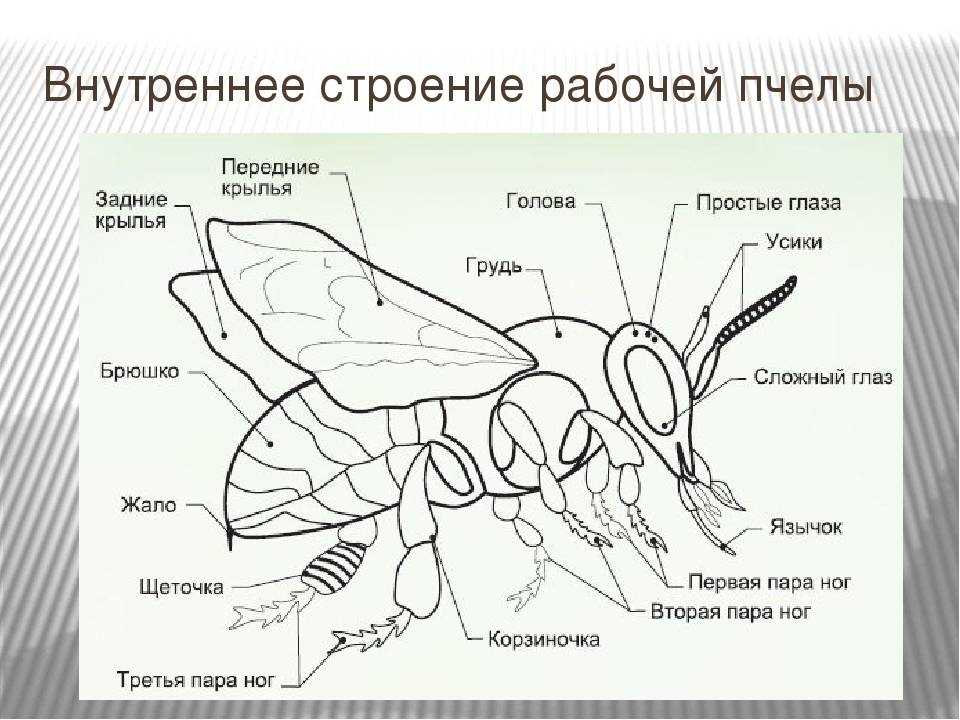
The head of butterflies has a complex structure and is equipped with various sensory organs. It contains eyes, antennae and mouthparts. Butterfly eyes are made up of many small eyes that allow them to see the world around them. The antennae serve for touch and smell, and also help to navigate in space. The mouthparts of butterflies are intended for feeding and can be of various types depending on the species.
Wings
Wings are one of the most characteristic and important parts of butterfly anatomy. They allow them to fly and play a key role in their life cycle. Each butterfly has two pairs of wings, anterior and posterior.
Butterfly wings have a unique structure. They consist of a thin, transparent film called a pterygoid integument that covers an internal framework of veins. The veins serve to support and strengthen the wings. They form a complex network that gives the wings strength and stability.
Butterfly wings come in a variety of shapes, colors and patterns. They can be dyed in the brightest and most varied shades, making them one of nature's most beautiful creations. With colorful patterns and camouflage, butterflies can easily adapt to their environment and hide from predators.
Wings also play an important role in the reproduction of butterflies. Males use their wings to attract females and show off their strength and health. They can flutter their wings and perform complex maneuvers in the air to attract the attention of females. In addition, on the wings of butterflies there are special substances, pheromones, which help them reproduce and find partners.
Body
The body of a butterfly is a complex structure consisting of several parts. It has an elongated shape and consists of three segments: the head, chest and abdomen.
The head of a butterfly has a complex structure and plays an important role in its life. Here are the eyes, antennae and lips. A butterfly's eyes are made up of many small eyes that allow it to see the world around it. The antennae serve as an organ of touch and help the butterfly navigate in space. The lips are meant for feeding and sucking the nectar from the flowers.
The breast of a butterfly is the main motor organ. It consists of three segments, each of which has its own function. The first segment of the thorax is called the prothorax and serves to attach the forewings. The second segment - mesothorax - is responsible for the movement of the hind wings. The third segment - metathorax - connects the chest with the abdomen and serves as the site of attachment of the legs.
The abdomen of a butterfly is the largest part of the body. It consists of several segments, each of which contains the digestive and reproductive organs. The abdomen also functions as a store of fat, which is needed to maintain energy during long flights.
Head
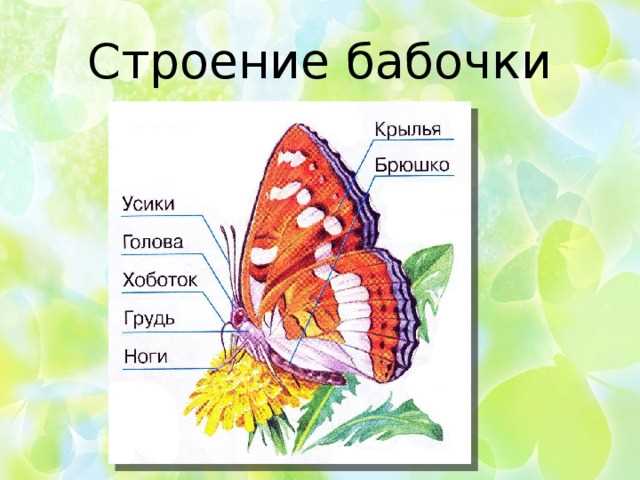
The head of a butterfly is one of the main parts of its anatomy. It contains the sense organs that help the butterfly navigate the world around it.
Head Composition:
- Antennae are a pair of antennae that are located on the top of the butterfly's head. Antennae perform various functions, such as detecting food, finding a mate, and orienting themselves in space.
- Eyes - Butterflies have compound eyes made up of many small facets. This allows them to see the world in a wide spectrum and distinguish different colors.
- Mouth apparatus - in butterflies, the mouth apparatus is a papilla, which is used for feeding. Some species of butterflies can feed on flower nectar, while others can feed on plant juices or even blood.
The butterfly's head can also have different colors and patterns to help it camouflage or scare off predators. Each species of butterfly has a unique head that is different from other species.
Wing structure
Wings are one of the main parts of the anatomy of butterflies and perform a number of important functions. They consist of several basic elements that provide them with strength and ability to fly.
drupes of wings
Butterfly wings are supported by a special drupe, which consists of thin and light plates. These plates, called rims, are located along the entire length of the wing and give it rigidity. The drupe of the wings also has the function of protecting the nerve fibers and blood vessels passing through the wings.
Wing veins
One of the main structural features of butterfly wings is the wing veins. These are thin but strong lines that run through the wings and tie the corollas. The wing veins serve not only to maintain the shape of the wing, but also to transport blood and nerve impulses throughout its area.
Note: The number and arrangement of wing veins are important features for identifying butterfly species.
Scales
Butterfly wings are covered with many small scales that give them brightness and beauty. The scales have different shapes and colors, which allows butterflies to have a variety of colors. In addition, the scales serve to protect the wings from the effects of moisture and temperature, and also help them glide through the air, improving aerodynamic performance.
- Wing veins and scales are important structural elements of butterfly wings.
- The wing bone provides rigidity and support to the wings.
- Wing veins transport blood and nerve impulses throughout the wing area.
- Scales give brightness and beauty to the wings, and also protect them from external influences.
Wing types
front fenders
The front wings of butterflies are the main organ of flight and come in a variety of shapes and patterns. They are usually wide and rounded, allowing the butterfly to easily maneuver in the air. Various patterns, colors and shades can be observed on the forewings, which help butterflies hide from predators or attract partners during breeding.
rear fenders
The hind wings of butterflies are usually more transparent and smaller than the front wings. They perform an auxiliary role in flight, helping the butterfly to control the direction of movement. The hindwings can be decorated with a variety of patterns and masks that serve to camouflage or deter predators.
Wing structure
Butterfly wings are made up of a thin layer of integumentary tissue called the wing plate, which is supported by a framework of veins. The veins are an important part of the structure of the wings, they provide the strength and stability of the wings during flight. Some types of butterflies have very complex and elegant patterns on their wings, which are formed due to special scales that give them brightness and beauty.
body organs
The body of butterflies consists of several main organs, each of which performs its own unique function.
Stomach
The stomach of butterflies is used to digest food. It is located in the lower part of the body and consists of several departments. In the stomach, food is mixed with digestive enzymes and broken down into molecules that are then absorbed by the body.
Heart
The heart of butterflies has a simple structure and serves to pump blood throughout the body. It is located in the upper body and consists of several sections that contract and relax to set the blood in motion.
Respiratory system
Butterflies breathe through special openings called tracheas. Tracheae penetrate all organs of the body and deliver oxygen to the cells. The respiratory system of butterflies allows them to fly and move actively.
Nervous system
The nervous system of butterflies consists of a brain and nerve fibers that spread throughout the body. She is responsible for transmitting signals between organs and controls the movements and behavior of butterflies.
reproductive system
The reproductive system of butterflies is responsible for reproduction. In males, it consists of the penis, which is used to fertilize the female. In females, the reproductive system includes the ovaries, in which eggs are formed.
Head sensitivity
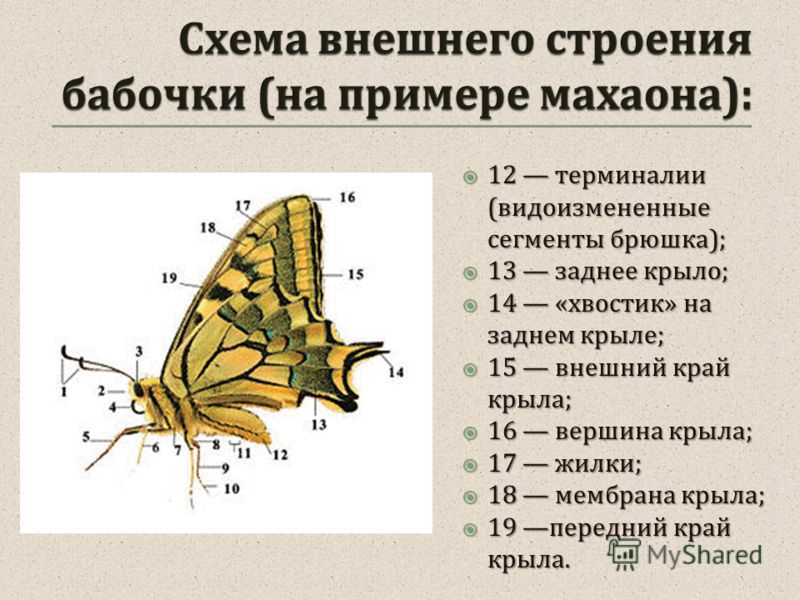
The head of butterflies is a very sensitive part of their anatomy. It contains various organs and receptors that allow butterflies to sense and interact with their environment.
Antennas
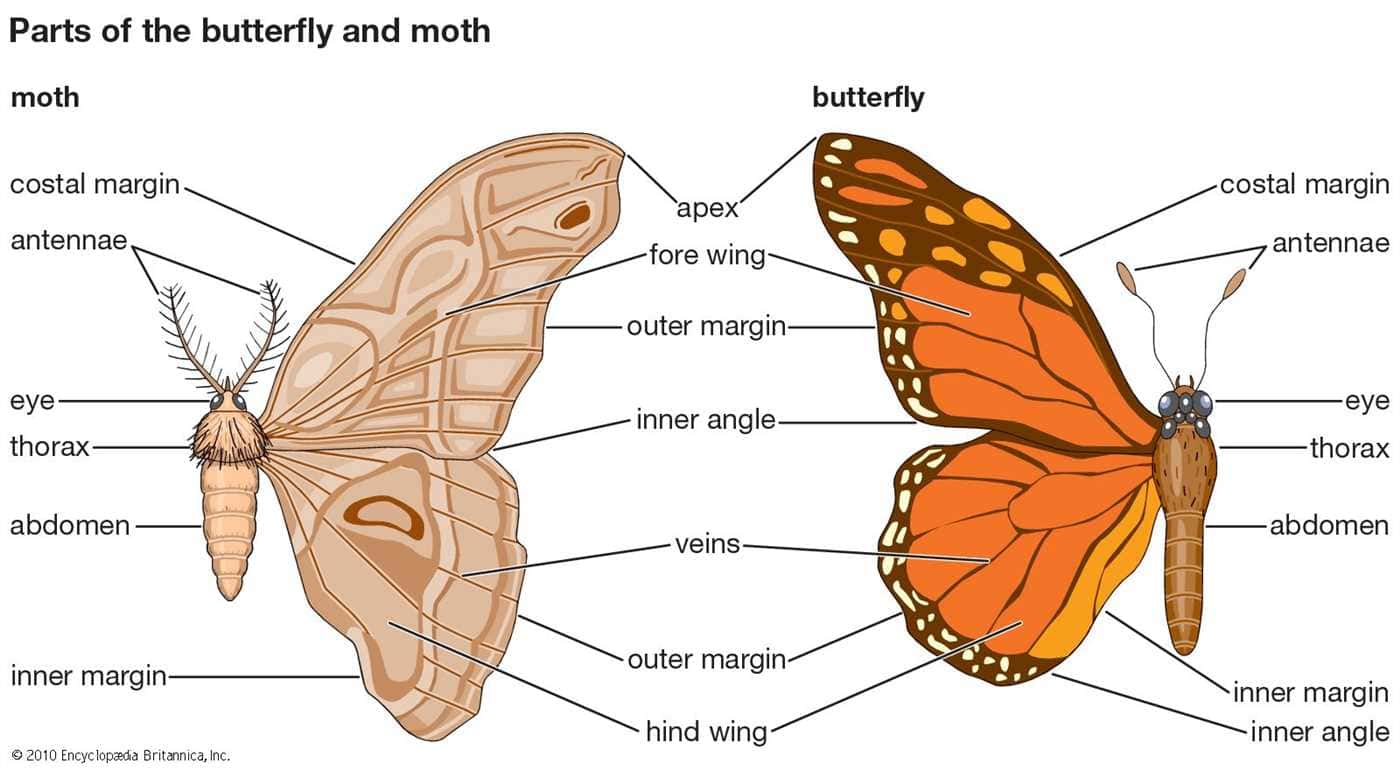
The main sensory organ of the head of butterflies is their antennae. The antennae are made up of many small segments called segments. At the end of the antennae are small protrusions called antennae. Butterfly antennas come in various shapes and sizes, depending on the species. They play an important role in the sense of smells, tastes and even sounds.
Eyes
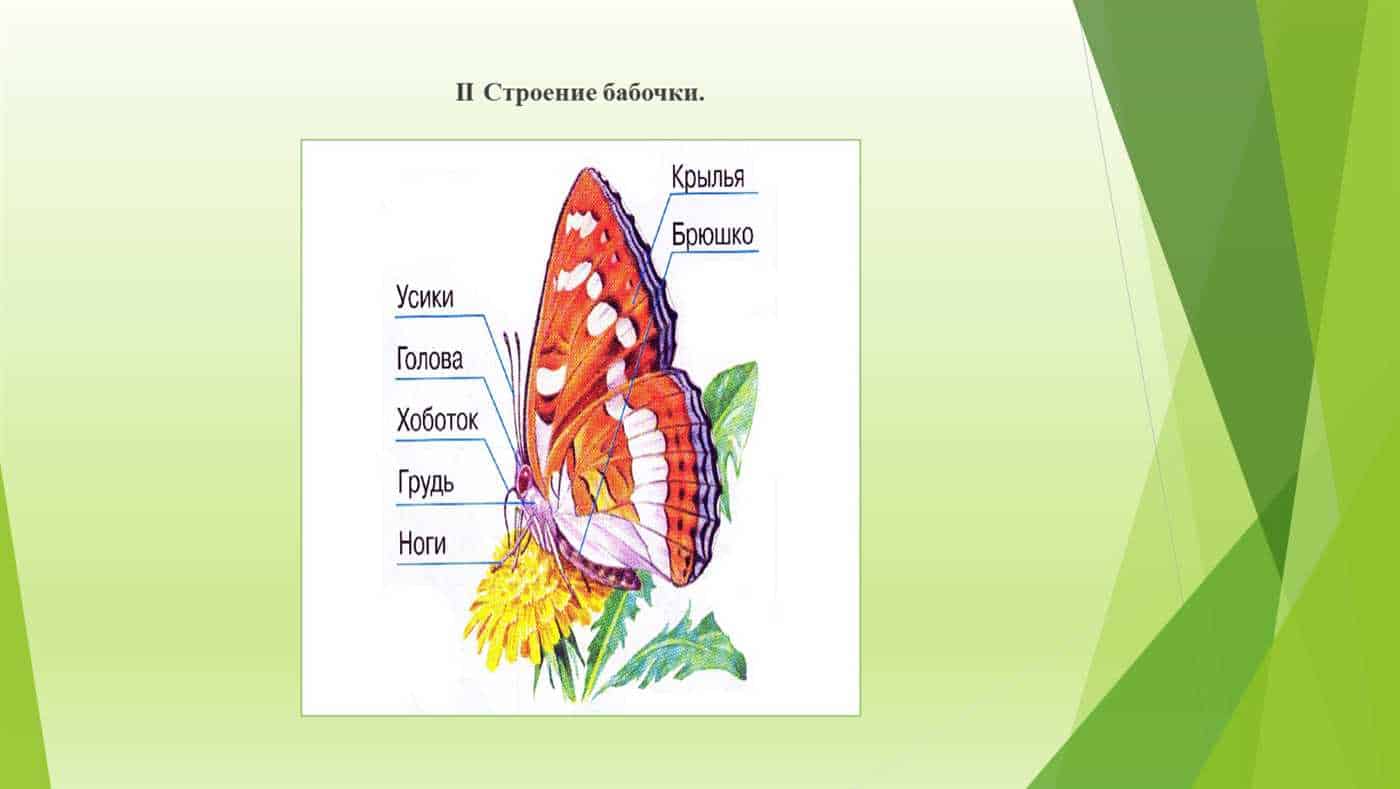
The head of butterflies also contains eyes, although they are usually not as developed as those of insects such as flies. Butterfly eyes are made up of many small eyes called ommatidia. Each ommatidia contains its own lens and receptors, allowing the butterflies to see the world around them. Although the vision of butterflies is not as accurate as ours, they are still able to distinguish colors and shapes.
Receptors
The head of butterflies also contains many other receptors that help them interact with their environment. For example, butterflies have receptors on their legs that help them sense surfaces and determine distances. Butterflies also have receptors on their heads that help them sense vibrations and sounds.
The role of anatomy in the life of butterflies
Anatomy plays an important role in the life of butterflies, as it determines their abilities and functionality.
Wings
Wings are the main organ of movement for butterflies and enable them to fly. They have a light and strong structure, consisting of many small veins that provide strength and flexibility. The wings are also covered with tiny pollen, which helps butterflies navigate their environment and find food.
Body
The body of butterflies consists of a head, thorax and abdomen. The head contains compound eyes, antennae, and mouthparts. Butterfly eyes are made up of many small eyes that allow them to see in a wide spectrum. Antennas are used to detect pheromones and other chemicals, as well as for orientation in space. The mouthparts consist of a papilla, which butterflies use to feed on flower nectar.
Head
The head of butterflies is the center of control and control of all processes in their body. Here are the brain and nervous system that coordinate the movements and reactions of butterflies. The head also contains sensory organs that help butterflies recognize danger and find food.
In general, the anatomy of butterflies plays an important role in their survival and reproduction. Each part of their body has its own function and specialization, allowing them to successfully adapt to their environment and thrive in their life cycles.


